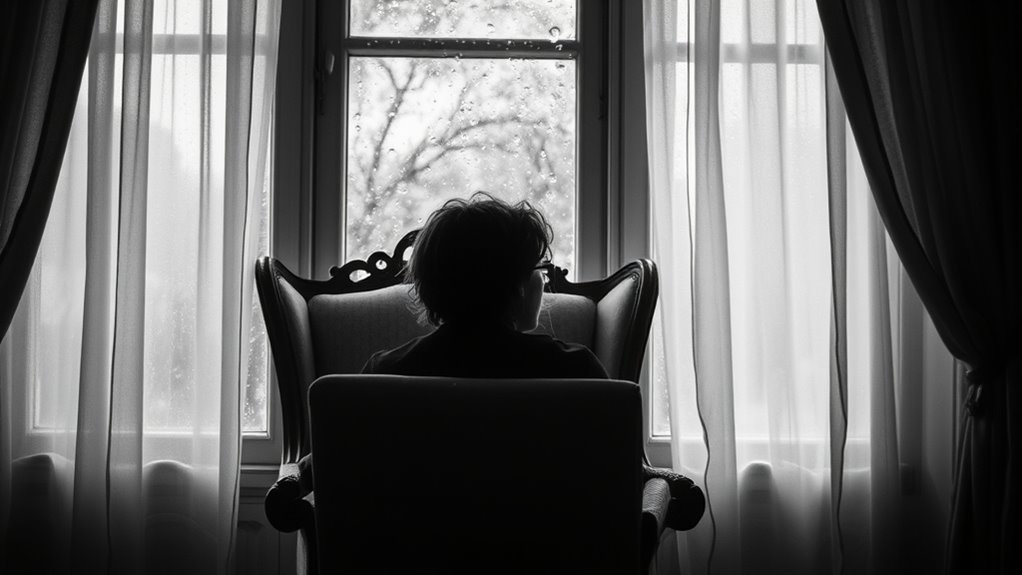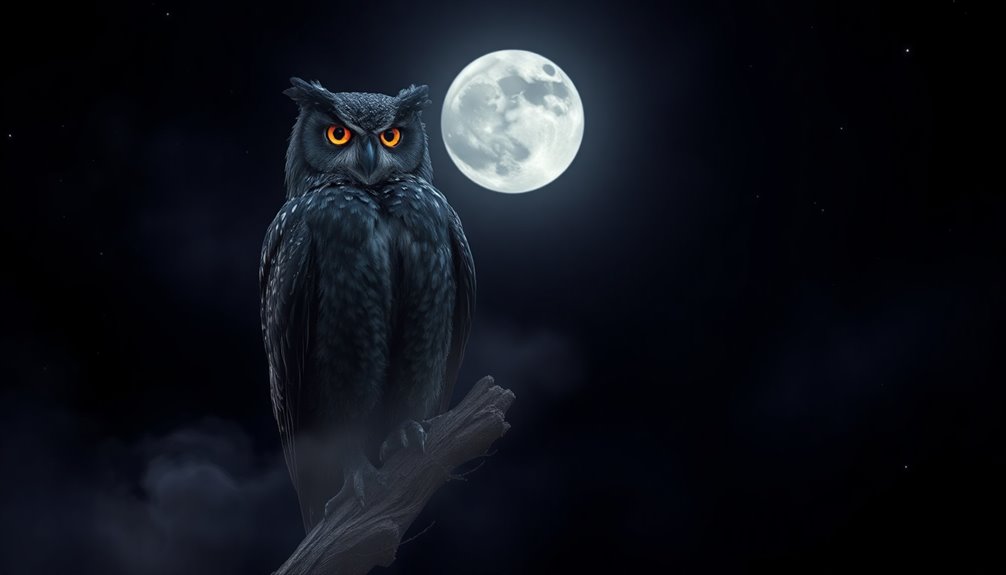Dreaming in black and white shows how your brain processes memories differently, often tapping into older, less vivid recollections. It reflects a focus on emotion, contrast, and shapes rather than color details, highlighting nostalgia or longing for simpler times. These monochrome dreams suggest your mind prioritizes emotional authenticity over visual richness. If you stay curious, you’ll discover more about what your dreams reveal about your memories and subconscious landscape.
Key Takeaways
- Dreaming in black and white often reflects access to older, less vivid memories stored in the brain.
- Monochrome dreams emphasize emotional and nostalgic content over visual details.
- Lack of color suggests a focus on shapes, contrasts, and feelings tied to past experiences.
- Black-and-white dreams may serve as a window into treasured childhood or classic cultural memories.
- This phenomenon highlights how the brain layers visual information and prioritizes emotional significance in memories.

Have you ever wondered what it means to dream in black and white? It’s a question that piques curiosity because most of us associate vivid, colorful dreams with our subconscious mind. When you dream in monochrome, it can make you think about how your brain perceives color and how that influences your memories. Color perception isn’t just about the visual; it’s deeply tied to emotion and nostalgia. Dreaming in black and white often triggers nostalgic feelings, transporting you to a different time or place—perhaps memories from childhood or old movies that you saw in shades of gray. These dreams tap into a different layer of your subconscious, highlighting how your brain processes and stores visual information.
Dreaming in black and white reveals how your subconscious connects with nostalgia and stored memories.
When you experience dreams in black and white, your mind isn’t just creating images; it’s recalling stored memories that may have been formed in a less colorful context. Think about the black-and-white photographs from the past or classic films. These images evoke a sense of nostalgia and a longing for simpler times. Similarly, monochrome dreams might be a reflection of your mind sifting through old memories, stripping away the distraction of color to focus on shapes, contrasts, and emotional content. This process can make the dream feel more raw and genuine, emphasizing feelings over visual details.
Your brain’s approach to color perception in dreams also reveals how memories are layered and interconnected. When you dream in black and white, it might suggest that your mind is accessing older, more deeply ingrained memories rather than recent experiences. This is because, historically, many early memories are stored in a less vivid or colorful manner, especially if they are from childhood. The absence of color in these dreams enhances the emotional weight of the memories, often intensifying feelings of nostalgia or longing. It’s as if your subconscious deliberately strips away the distractions of color to focus on the emotional core of those experiences.
In addition, preppy dog names are often associated with a refined aesthetic that could parallel the classic, timeless feel of black-and-white imagery, reflecting how certain memories are preserved in a more elegant, understated way. In essence, dreaming in black and white isn’t just about a lack of color; it’s a window into how you perceive your past and how your brain processes memories. It highlights the emotional landscape tied to visual recollections, emphasizing nostalgia and the timeless nature of certain memories. So, next time you find yourself in a black-and-white dream, consider it a reflection of your brain’s way of connecting with its most treasured, nostalgic moments—those stored away in the depths of your memory, waiting to be revisited in shades of gray.
Frequently Asked Questions
Do Color Dreams Occur More Often During Certain Life Stages?
You might notice that color dreams seem more common at specific life stages, influenced by age-related changes in your sleep patterns and memory. Younger people often report more colorful dreams, while older individuals tend to experience more black-and-white ones. These variations could relate to shifts in how your brain processes visual information during sleep, affecting dream frequency and color perception as you age.
How Do Cultural Backgrounds Influence Black-And-White Dreaming?
You might notice that cultural backgrounds influence black-and-white dreaming through cultural symbolism and artistic influence. If you come from a culture where black and white imagery holds specific meaning, your dreams could reflect these symbols more vividly. Artistic influence also shapes how you interpret and experience black-and-white visuals in dreams, making them more resonant with your cultural experiences. This connection deepens your understanding of your subconscious and cultural identity.
Can Black-And-White Dreams Predict Future Events?
You might wonder if black-and-white dreams can predict future events. While some believe these dreams hold supernatural prophecies, there’s little scientific proof. Instead, your subconscious symbolism often shapes these dreams, reflecting fears or hopes rather than actual predictions. Keep in mind, your mind processes information differently during sleep, so black-and-white dreams are more about internal messages than forecasting what’s ahead.
Are There Differences in Dream Recall Between Color and Black-And-White Dreams?
You might notice differences in dream recall between color and black-and-white dreams, as color dreams often have higher vividness and emotional intensity. These factors make color dreams more memorable, while black-and-white dreams may seem less striking and easier to forget. Your ability to recall a dream depends on how vivid and emotionally charged it feels, which influences how well you remember it upon waking.
What Neurological Factors Cause Some People to Dream Only in Black and White?
You might wonder why some people only dream in black and white. It’s likely due to differences in your visual cortex, which processes visual information. Reduced sensory processing or less activation in this area can limit color perception during dreams. These neurological factors mean your brain may not fully activate the pathways needed for color dreaming, resulting in monochrome dreams.
Conclusion
So, next time you dream in black and white, don’t dismiss it as dull or unimportant. Instead, realize it’s a fascinating glimpse into how your memory processes images and experiences. You might worry it means your dreams are less vivid or exciting, but that’s not true—black-and-white dreams reveal just how your brain works behind the scenes. Embrace these dreams as a unique window into your mind’s incredible ability to store and recall memories.











